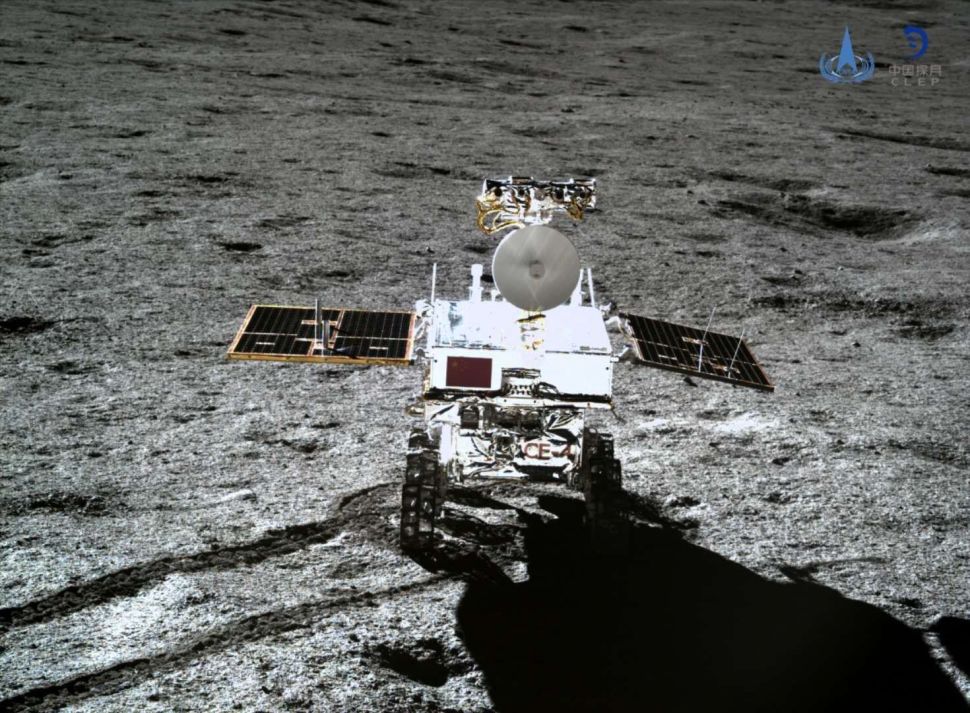China’s Chang’e-5 probe has successfully landed on the moon, in a landmark mission to bring lunar surface samples back to earth. Netizens in India have suddenly remembered the country’s ambitious Lunar mission – Chandrayaan.
Afghanistan, The Graveyards Of Super Powers – Will China Be Next In The Firing-Line?
With this effort, China will become the third country after the US and the former Soviet Union to bring back samples from the moon. The mission will attempt to collect 2 kg of samples, or the regolith, in a previously unvisited area known as Oceanus Procellarum, or ‘Ocean of Storms’.
The country has made exceptional progress in its lunar mission, and currently has seven operational spacecraft on or around the Moon: Chang’e-3 lander, Chang’e-4 lander and Yutu-2 rover, Queqiao relay satellite, CE-5 T1 orbiter, CE5 orbiter, and CE-5 lander/ascent vehicle. No other country has an operational rover on the surface of the moon at present.
China is the only country that has successfully put a robotic spacecraft on the moon in the 21st century. Its Chang’e-4 spacecraft made history when it landed on the far side of the moon in January 2019, the only one to do so. The country also landed Chang’e-3 in December 2013 which incorporates a robotic lander and China’s first lunar rover.
Chang’e-4 explorer became the first man-made spacecraft to soft-land on the far side of the moon, and the mission comprising a communication relay satellite, a lander, and a rover Yutu-2, is still operating and studying lunar geology even after two years.
Unlike its previous lunar missions, China relayed the live broadcast of the landing on its state television, indicating the growing confidence in its space capabilities.
How Is ISRO Faring
China’s neighbor, and formidable space power, India, too, is making remarkable strides in its deep-space missions. The Indian Space Research Organisation (ISRO) has mastered the technologies knowhow for space launches with decades of successes and failures, and today, the space agency helps many countries send their satellites to orbit.
The ISRO has sent multiple missions to deep space, to planet Mars and our neighboring moon, with the agency now gearing up to send a maiden mission to Venus.
India launched the Chandrayaan-2 mission in September last year, which successfully deployed a lunar orbiter that relays scientific data back to earth. But ISRO’s hopes were dashed when it for the first time tried to land the remote-controlled Vikram Lander on the moon after the contact with the landing craft was lost just before the touch-down. The orbiter, however, continued its journey around the moon, sending crucial science data back to ISRO’s mission control room.

India’s first lunar mission, Chandrayaan-1, launched in 2008, operated for almost a year before ISRO lost contact with the orbiter. According to the space agency, the mission was intended to be a technology demonstrator, which was to also return scientific information about the moon. The major goal of Chandrayaan-1 was to collect data about the moon’s geology, mineralogy, and topography.
The most notable contribution of Chandrayaan-1 was its discovery of water on the surface of the moon. The data supplied by the spacecraft helped the scientists confirm the presence of water on the moon, which was officially announced by NASA around the same time in September 2009. According to ISRO, the mission carried five scientific payloads from India, with several other scientific instruments from other countries.
India’s ambitious next mission to the moon, the Chandrayaan-3, will attempt to soft-land on the moon after its predecessor faced a setback with the maneuver. The mission was lined up for 2020 itself, but due to the Covid-19 pandemic, India’s Chandrayaan-3 lost the race to China’s Chang’e-5 probe, and will now be launched by early 2021, as confirmed by Jitendra Singh, India’s minister of state for the department of space, in September 2020.
So who’s ahead?
Although China started its space missions much later than the US and the erstwhile Soviet Union, the country has made immense progress in space exploration with a wide range of launch missions in the last decade. The country now stands in the club of elite space-faring nations, with multiple working robotic crafts on the surface of the moon. The Chinese astronauts have also docked with their own space station multiple times.
Apart from its multiple missions to the moon, the country this year set its eyes on the red planet, sending its first-ever 5000-kg Tianwen-1 spacecraft to Mars. Blasting off from the Wenchang Satellite Launch Center aboard a Chinese Long March-5 rocket on 23 July, the craft contains a lander, orbiter, and rover.
Experts view China’s rise in the space exploration domain as the most significant change in the post-Cold War era. The country has conducted 207 launches between 2010 and 2019, which is more than one-and-a-half times the number of launches it carried out in the previous four decades, according to the Washington-based Center for Strategic and International Studies (CSIS).
The CSIS report says that more than one-fifth of China’s total launches took place in 2018 and 2019 alone. The country’s 38 launches in 2018 stand as the highest amount in a single year by any country in the 21st century.
While India too is making significant progress in space exploration, it lags behind the swift advancements of the Chinese space agency, which has pursued an aggressive policy. China has developed its indigenous rocket capabilities to the point where all of its space launch requirements are met domestically, where it surpasses even the US, which has to depend on other country’s rockets to launch some of its satellites. Nearly all the satellites launched by China into orbit have been carried by its indigenous rockets.

At the core of the country’s space capabilities is the Long March series of rockets, which includes several variants with different capabilities. These rockets are designed and developed by the state-owned defense industry giant, China Aerospace Science and Technology Corporation (CASC). Through 2019, the Long March series completed a whopping 307 successful launches and experienced 7 partial failures and 9 failures.
India Is Yet To Clear Hurdles
India is far from reaching those capabilities, although the country has been successful almost in all the missions it has pursued so far. Experts argue this has not been enough to match China’s capabilities in space. India’s attempt to land a rover on the moon was unsuccessful, while China had already done that multiple times.
What remains the foremost concern about the Indian space missions is the lack of scientific knowledge that the probes normally bring back from their expeditions. Although ISRO develops and launches the missions at the fraction of the cost expended on US or Russian missions, the quality of scientific output is not up to the mark.
Writing for The Wire, Jatan Mehta observes, “ISRO’s official list of publications say there have been only 27 peer-reviewed papers relating to Mangalyaan (India’s Mars mission) after six years in orbit. In contrast, MAVEN (NASA’s Mars mission) has helped produce many seminal scientific results about the Martian atmosphere, with a repository of at least 500 papers and growing.”
“What’s more concerning about Mangalyaan’s short publications list is that about half of those are simply engineering descriptions of the mission, not scientific results from the mission,” Mehta says.
Mehta highlights certain failures of the Mangalyaan mission, which hampered scientific observations of Mars, including the breakdown of methane sensors aboard the craft.
“There also seem to be no published results from the Lyman Alpha Photometer. By looking for hydrogen escaping the Martian atmosphere, it was supposed to tell us how much water Mars lost since its formation and at what rate.”
He wonders why ISRO was in such a hurry to launch in 2013 when it could have targeted the 2016 launch opportunity instead. “The reason may be political: the urge to successfully orbit Mars before China or Japan does,” he adds.
It has been a concern among the scientific community that the Indian missions don’t share much of the data retrieved from their observations. Compared to NASA missions, where every small detail is instantly published worldwide, little is known about the Indian space endeavors, especially the Mangalyaan, which has spent almost five years in the orbit of Mars.
ISRO is gearing up for its Gaganyaan launch, expected to carry astronauts into earth’s lower orbit, something the country is trying for the first time ever. Other important future missions include the Chandrayaan-3 mission to the moon and the Shukrayaan mission to Venus. ISRO is working day-and-night to aim for higher echelons in the global space quest, however, it cannot match up to the aggressive Chinese space march, which is backed by a humongous budget from the Chinese government and the combined technological effort from the country’s commercial space companies and the publicly-owned organizations.
China has set an ambitious agenda for itself and aspires to become the world’s leading space power by 2045. Towards that direction, the country is giving a major thrust to mastering independent innovation in the space industry. The country has invested heavily in research and development (R&D) in the sector.
The official government figures put China’s rising R&D spending for “spacecraft manufacturing” at $386.6 million in 2016, from $22.6 million in 2000, which is a staggering figure. On the other hand, innovation in Indian space industries has weakened due to economic problems the country is facing.
There has been little effort to streamline smaller players in the sector into the national effort to build space capabilities. The Indian dedication isn’t matching the Chinese quest to conquer the boundaries of outer space.




